Tracking Time Through Shifting Sands
What the world’s beaches can teach us about Earth’s history.
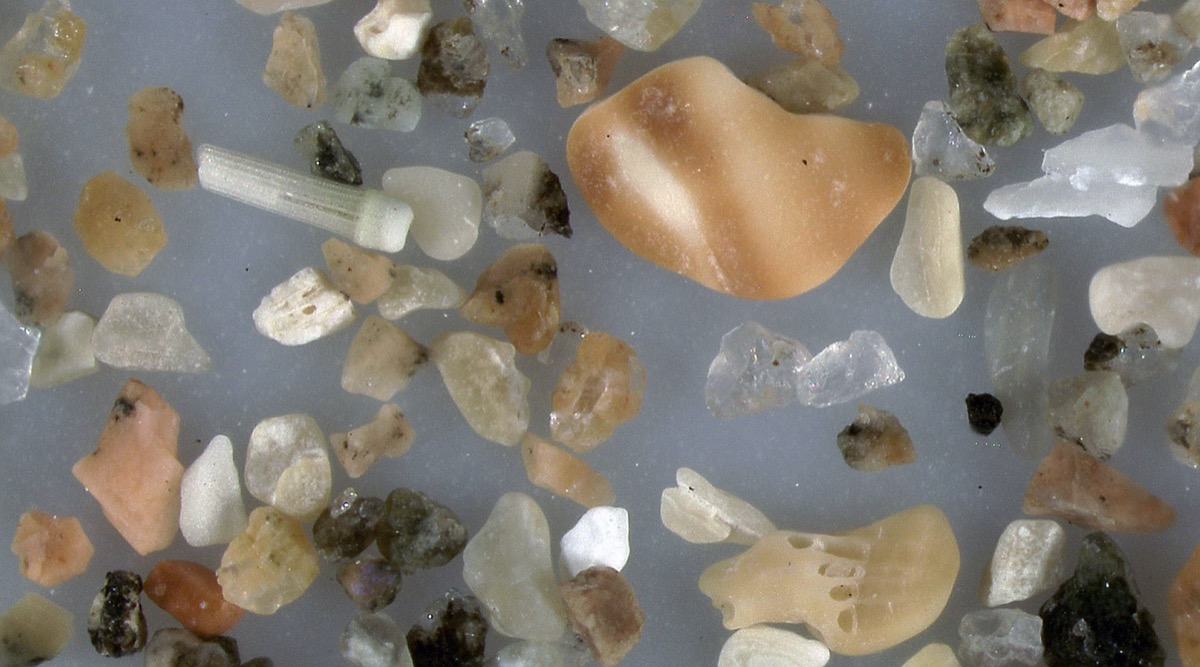
A microscope at high magnification reveals a closer look at the diversity of sand. This sample of sand from Sand Beach in Maine collected by Robert Maronpot includes a white sea urchin spine to the left of a large striped tan mollusk shard. Some clear quartz sand grains are just to the right of center and a light tan barnacle fragment with linear grooves is just to the center near the bottom of the image. Reddish-brown grains are potassium feldspar. Credit: Robert Maronpot/Magnified Sand
 Do you want to go back in time with SciFri? Sign up for the Science Friday Rewind newsletter to get more never-before digitized stories and audio bites from our archives!
Do you want to go back in time with SciFri? Sign up for the Science Friday Rewind newsletter to get more never-before digitized stories and audio bites from our archives!
Strolling along the sheltered cove of Sand Beach in Bar Harbor, Maine, you might be focused on the ocean view. But if you took a closer look at the grainy mixture underfoot, you’d find a record of an ancient world, a trove of tiny glinting crystals, weathered stones, and even the pulverized remains of mussels, mollusks, and other marine life.
“A large part of the sand is crushed up spines of sea urchins, if you can imagine that,” Stephen Leatherman, professor and director of the Laboratory for Coastal Research at Florida International University, told Science Friday in an archival interview in 1998. Though most people take sand for granted, he explained, “Beaches are made of a lot of different things.”
The sand you sprawl your beach towel across is composed of many materials that vary in shape, color, texture, and composition. Most beach sand is made up of quartz, “silicon dioxide, natural glass,” explained Leatherman. Rocks in rivers and streams erode slowly over time as they are carried to the ocean, where rolling waves and tides bombard them into even smaller particles. The finer the sand, the older it is. For instance, beaches across the mid-Atlantic states are crumbling remnants of the “Appalachian Mountains that have been ground down over millions of years,” said Tony Pratt, administrator of the Shoreline and Waterway Management Section within the Delaware Department of Natural Resources and Environmental Control, on SciFri in 1998. Beaches are dynamic, he explained.
“They’re what I characterize sometimes as liquid landforms, the area that absorbs the energy of the sea.”
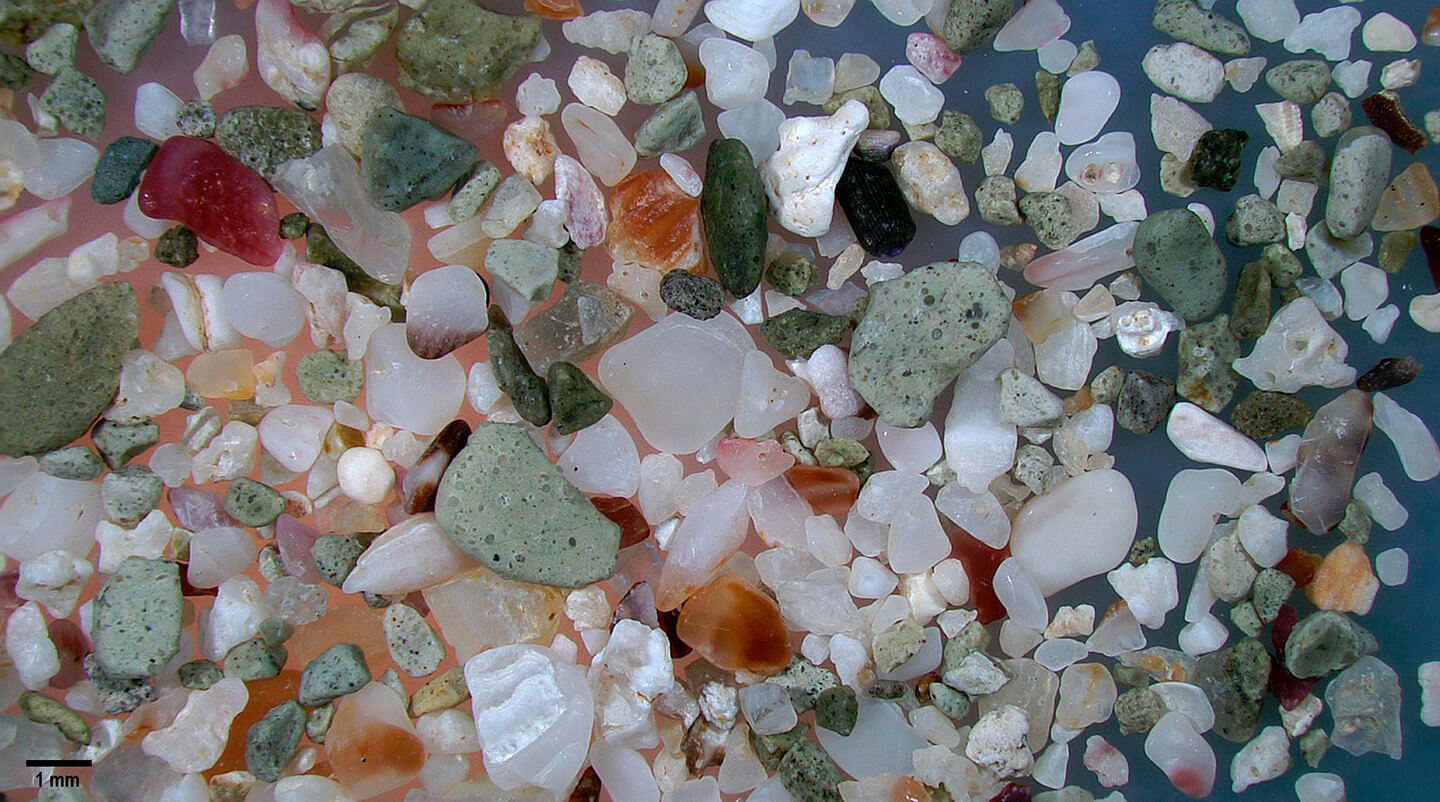
Sand from Isla Chora on the Pacific coast of the Nicoya Peninsula, Costa Rica. This beach sand is derived from stream and marine erosion. Under the microscope, you can better see barnacles shards, bivalve shell fragments, and flecks of porphyritic basalt. Credit: Robert Maronpot/Magnified Sand
When a storm batters a beach, for instance, harder, heavier minerals—like magnetite and muscovite—can rise in the sand column, and temporarily change the color of the beach. “We have storms [in Delaware] which actually leave vast deposits of big black sheets of sand on our beaches, which people often mistake as being pollution or oil,” Pratt said. This shift in sand color can make it possible to see storm events even three or four years later.
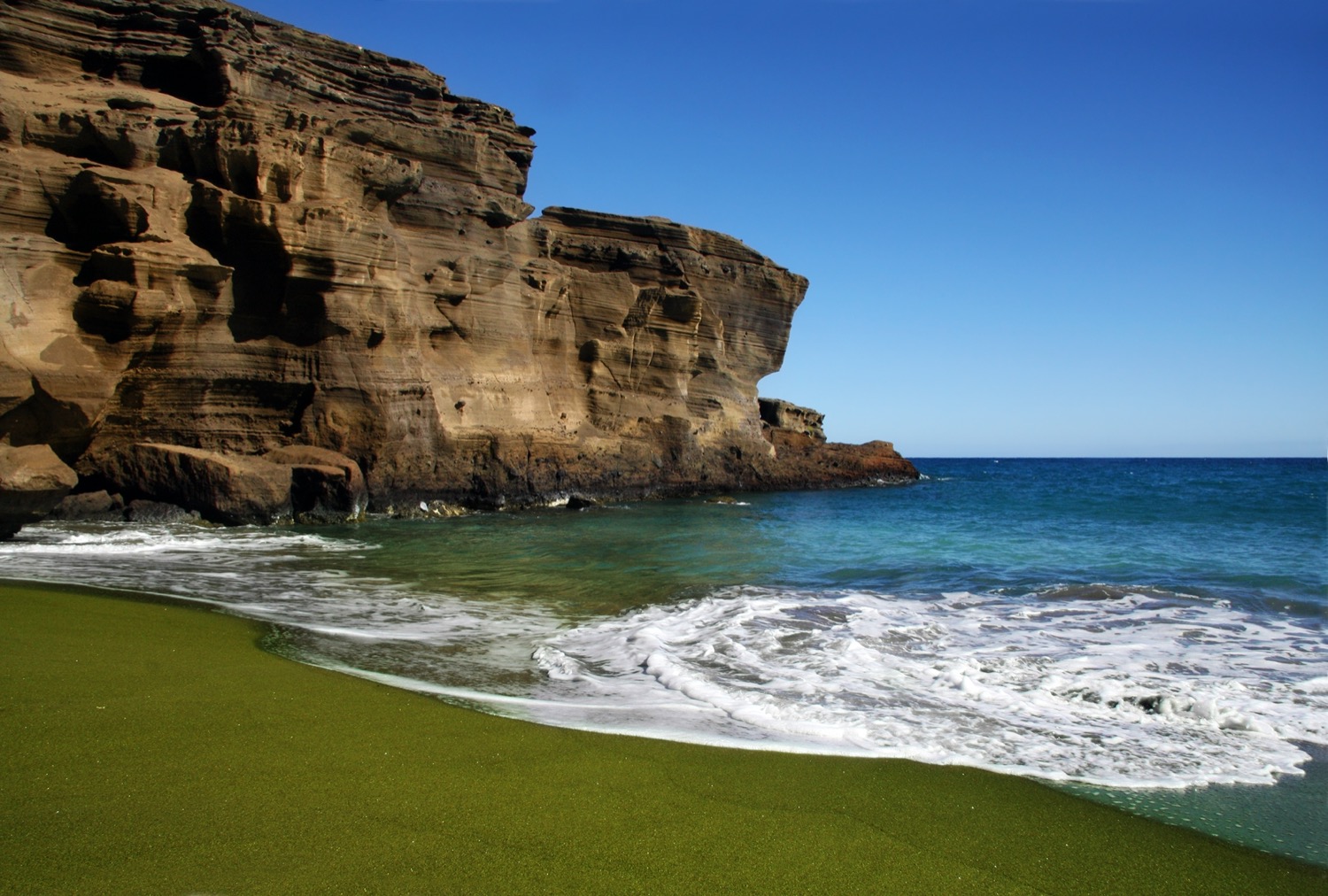
The array of hues—from calamine lotion pink to shimmery white—also offers clues to sands’ mineralogy and geologic origins. Out on the southern tip of the Big Island of Hawaii, the sand on Papakōlea Beach is a deep emerald. Papakōlea Beach, one of the few green sand beaches in the U.S., was created around 49,000 years ago, when the Mauna Loa volcano erupted and formed a volcanic cinder cone. Underwater, “the lava supercooled forming glass rather than the hard rock,” Leatherman explained. As the remaining cinder cone erodes, it deposits the green shiny, translucent crystals, known as olivine, which gives the beach its moss-green luster.
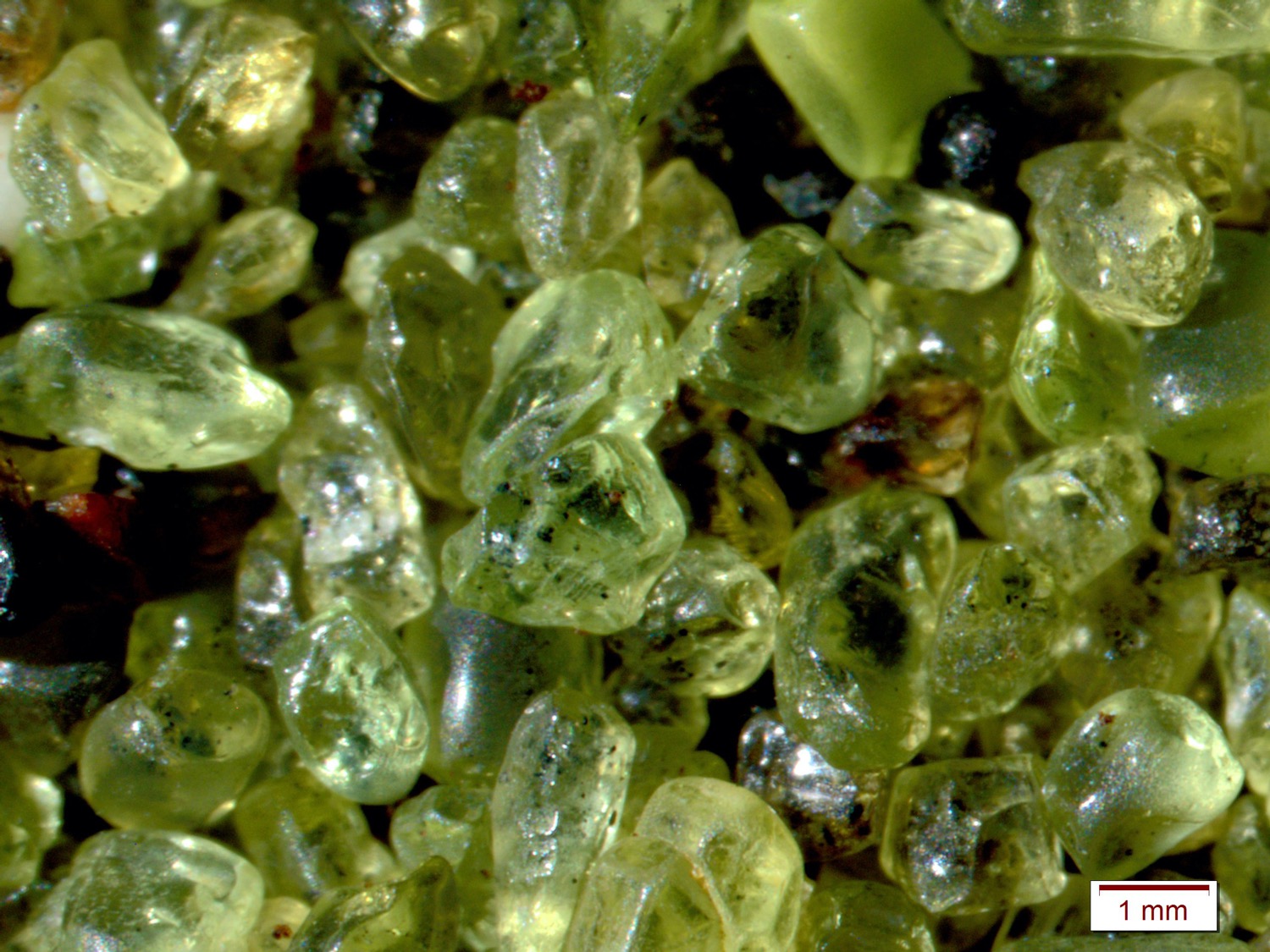
Papakōlea Beach sand under high magnification collected near South Point, Kaʻū district, the island of Hawaiʻi. Sample from Lizzie Reinthal. Credit: Mark A. Wilson/College of Wooster/Public Domain via Wikimedia
Coastlines can also be riddled with remnants of dead marine organisms, such as the White Cliffs of Dover on the southeastern coast of England. The sheer walls are known for their gleaming white chalk, a type of “carbonate cliffs,” Leatherman said. In 2016, a study published in Global Biogeochemical Cycles found evidence that single-celled marine algae, called coccolithophores, played a key role in creating this formation. When coccolithophores die, their hard calcite plates sink and build up into chalk on the ocean floor. Scientists say that a great algal bloom in the Southern Ocean almost 100 million years ago is the likely source of the chalk composites of the White Cliffs of Dover.
“The world we walk on is the carbonate remains of all the calcified life that has ever lived, and that’s beautiful to think about,” science journalist Cynthia Barnett told Science Friday in a recent interview about her new book, The Sound of the Sea: Seashells and the Fate of the Ocean. She explained how the shells of squishy-bodied creatures, like sea snails and clams, have laid the foundation for some of society’s most impressive structures: “If you think about the limestone Pentagon or the Lincoln Memorial or even the Empire State Building, these are really powerful buildings—and they owe their strength to incredibly fragile, soft beings.”
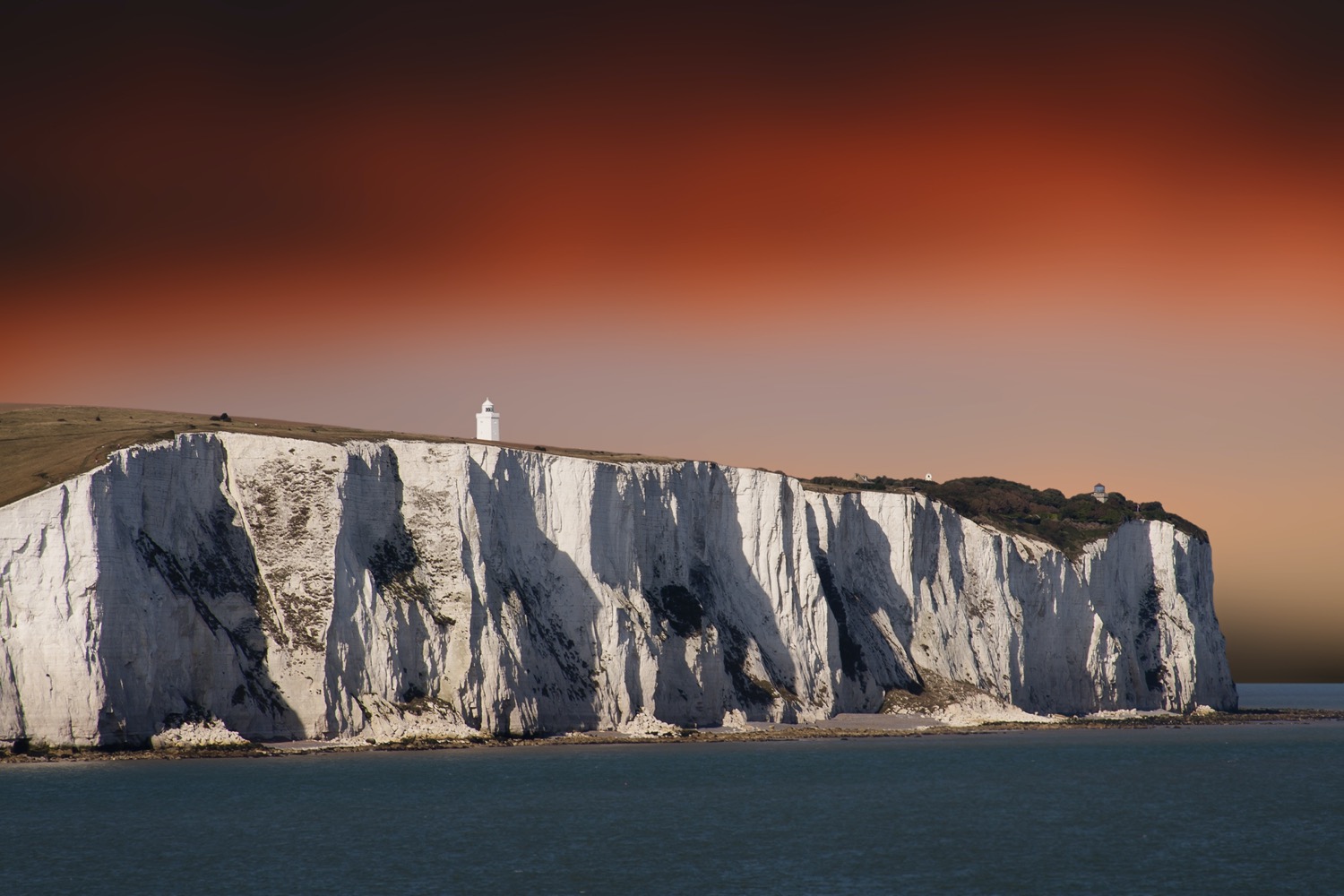
Even sand’s use as an essential construction material has a long history—the Egyptians created a type of concrete with sand, while the Romans furthered the technique in their temples. But our relationship with sand has shifted over time, Aurora Torres, postdoctoral researcher in Michigan State University’s Center for Systems Integration and Sustainability and at the Catholic University of Louvain, told Science Friday in May of 2021. Around the 1950s, the rise in population and urban development accelerated our extraction of sand and gravel. Today, sand is not only an ingredient in buildings and streets, but is used to make glass, paint, and microchips in smartphones and laptops.
“We extract 50 billion tons of sand and gravel every year,” Torres said. “These are now the most extracted materials in the world, beyond fossil fuels and biomass.”
The demand for sand is fueling environmental and socioeconomic wars, resulting in “a global sand crisis,” Torres added. In India, sand mafias control mines and are suspected in connection to hundreds of murders, while Singapore was recently accused of stealing sand from Indonesia beaches for massive urban development—resulting in the disappearance of 23 islands, Torres said.
From skyscrapers to sea skeletons, the next time you feel the beach sand between your toes, know that these pummeled grains and sandy slurries connect you to millenia of Earth’s history.
Take a listen to the full archival episode about beaches with scientists and historians, who cover rising seas levels, storm erosion, and the cultural and societal history of these iconic summer getaways.
Please note, this episode initially aired on July 3, 1998, and may contain scientific information that is now outdated. We wanted to provide you with a full archival episode for reference. The article is factually correct and contains updated information that can help you contextualize this archival episode of Science Friday.
Invest in quality science journalism by making a donation to Science Friday.Donate To Science Friday
Lauren J. Young was Science Friday’s digital producer. When she’s not shelving books as a library assistant, she’s adding to her impressive Pez dispenser collection.